My friends, let me tell you a little bit about Cuach Torc. He’s a Common Cuckoo. If you know anything about cuckoos, it might be that they lay their eggs in the nests of other birds or that they really do give a monotonous “COO-coo” call that inspired many a wonderful clock. What you might not know is that they are highly migratory, and that their migratory behavior is downright fascinating.
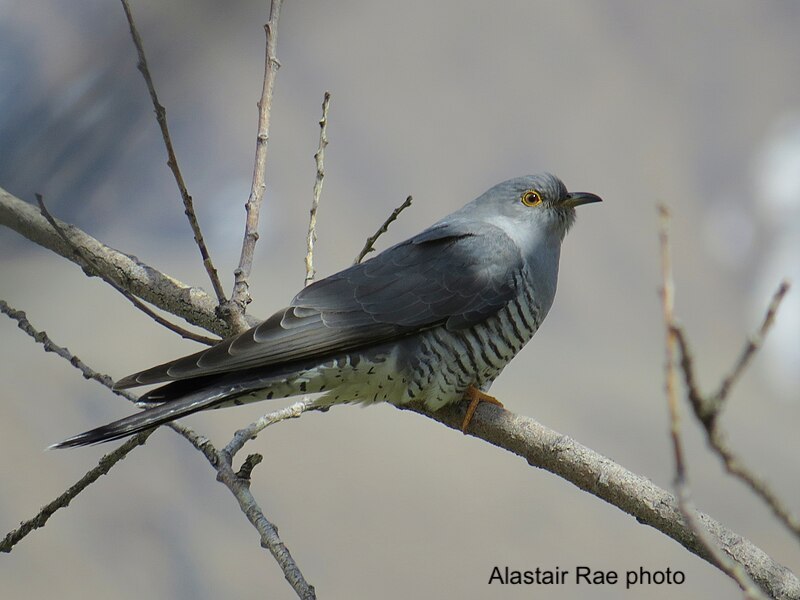

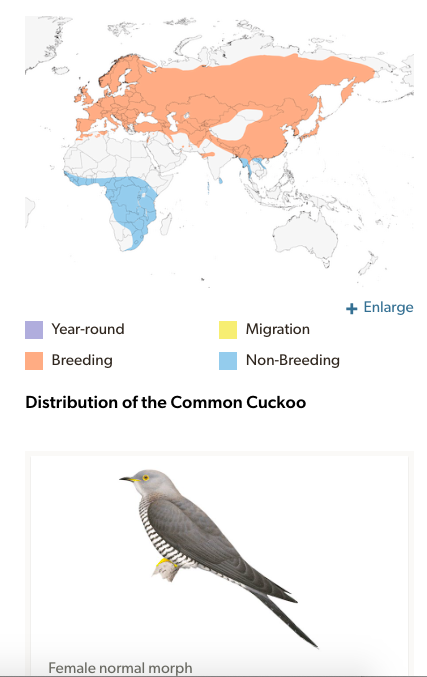
The British Trust for Ornithology has been catching cuckoos in Great Britain and Ireland, outfitting them with GPS tracking tags, and publicizing their annual movements. You can even sponsor one to help support this important research. In fact, I blogged about their nascent efforts way back in May of 2012, so I guess I’ve been admiring this project for some time now.
Here I’ll illustrate some of that work featuring one such cuckoo, Cuach Torc. You can follow along with more accurate dates and locations at the BTO; my summary here just puts it all in one place and gives me the chance to editorialize a bit.

On a Wednesday morning, May 17 of 2023, Cuach Torc was first captured, banded (ringed, as they say over there), and outfitted with a GPS transmitter in Killarney National Park, County Kerry, in Ireland. Cuach means cuckoo in Irish; Torc is a famous mountain (and waterfall) in the Park. I’ve established a feeling of kinship with Mr. Torc, given that some of my Irish ancestors also hailed from Kerry, and would’ve known Torc quite well. It’s been my good fortune to visit Ireland twice, and both times I made a pilgrimage to Killarney National Park; Torc Waterfall in particular.
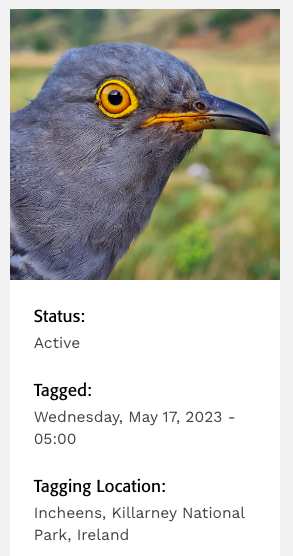

Following his capture, Cuach Torc remained a few more weeks in the Park (presumably enjoying a fine breeding season), but by the 7th of June he was on the move, making it somewhere near the Cork/Waterford border to the east. By the 14th of June, he had crossed the Celtic Sea and the English Channel to enjoy a summer holiday in France. He pressed on to the South of France by the 19th of June, and then spent some time there before crossing northern Italy and the Adriatic Sea to Bosnia and Herzegovina by July 3rd 2023.
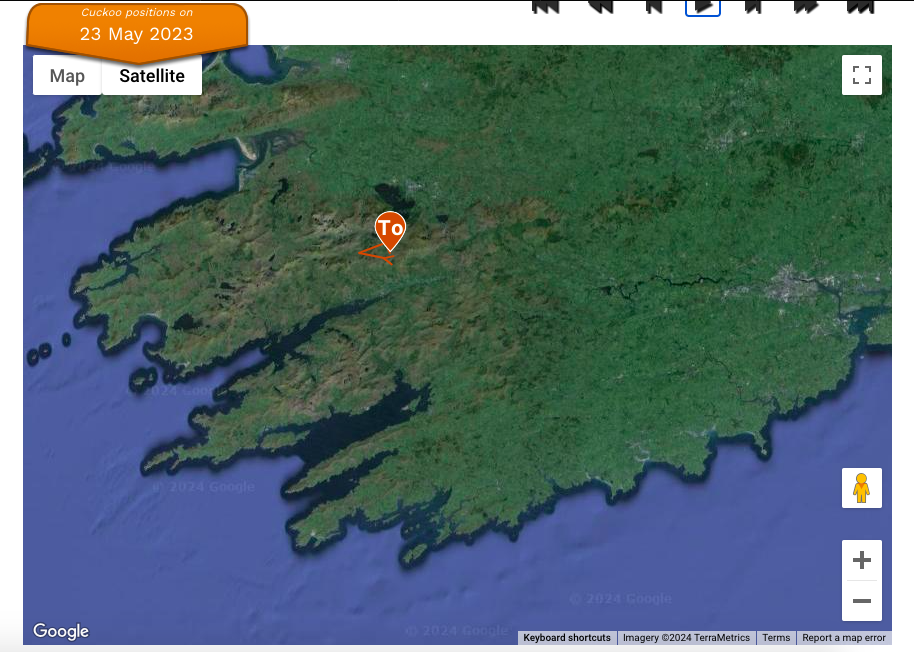



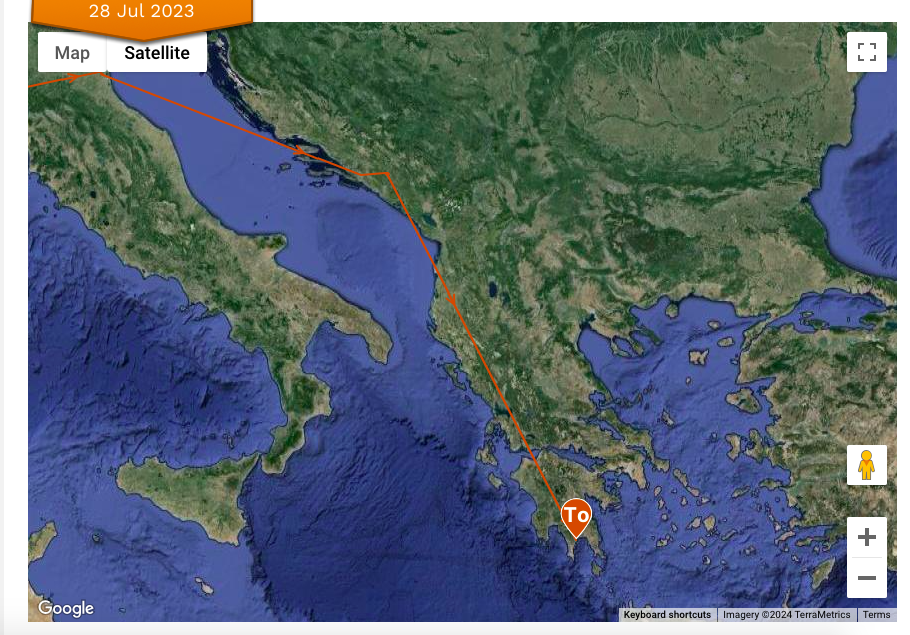
The BTO cuckoo tracking summary specifically mentions his passage near Ravenna in Italy, which is incidentally not far from where some of my Italian ancestors once lived. Centuries ago, my ancestors from different countries in Europe could’ve seen the literal, same birds at different points in their annual cycles. Amazing…
Cuach Torc doesn’t care for such things, though. Last summer, he spent the rest of July along the Ionian/Mediterranean coast in Greece. What was he doing for those 3–4 weeks in Greece? Was this his post-breeding molt? Maybe he was just packing on the calories for the first big obstacles he’d face on this southbound migration? On the 28th he was moving again and by July 30 he has crossed the Mediterranean Sea and touched down in Libya.
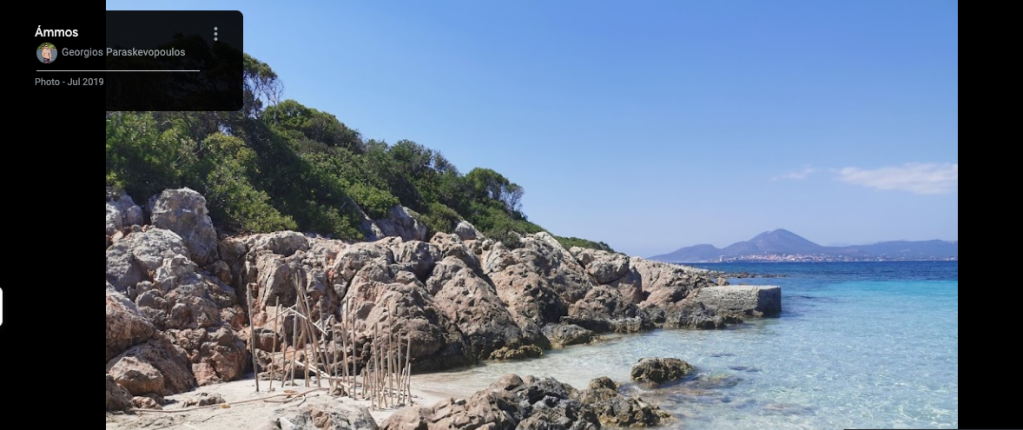
Libya! Our man who we first met in the verdant temperate rain forests of Killarney is now literally in the Sahara. He’s there during the absolute hottest time of the year –– it’s July 30th.
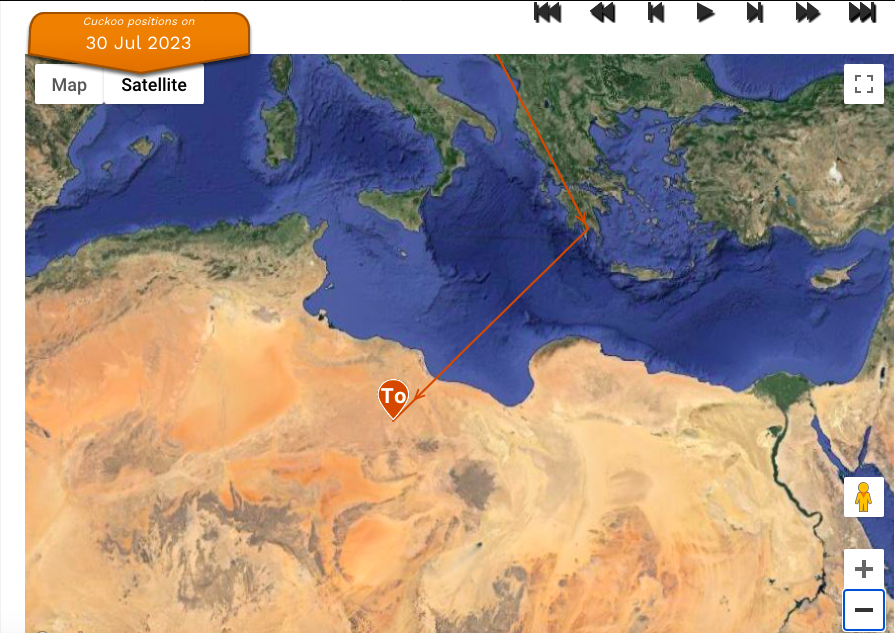
But his stay is short. A few days later, on August 4th, he has crossed the Sahara and arrives in a spot near the village of Kammbuna in Sudan. This will be his home for the next six weeks or so. If Kammbuna doesn’t ring a bell, it’s in central Darfur. This is the war-torn region of western Sudan from which potentially 300,000 have been killed and another 3 million displaced since 2003. His Sudanese sojourn centers on the Marrah Mountains, a massif that rises among the surrounding Sahel. Compared to the surrounding desert landscapes in Darfur, the Marrahs are lush and green. Maybe it’s this waterfall that attracts him as a reminder of Torc? He stays about 6 weeks here. That’s enough time and the right time of the year to complete an annual molt for most small birds, but cuckoos are large for “small” birds and their molts are quite complex. For example, primary molt evidently occurs in 4 stages –– more like a hawk’s than a thrush’s.
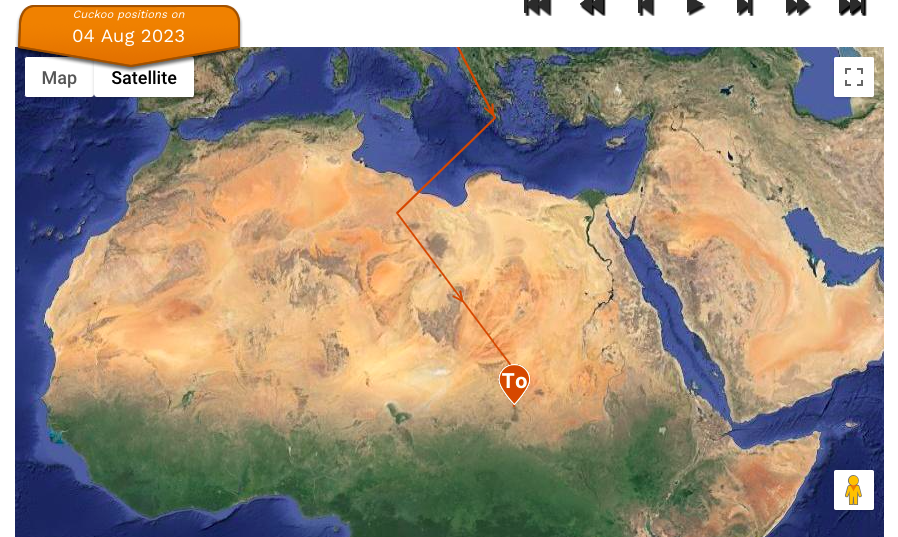


By 16 September, Cuach Torc was on the move again. He finally seems to have arrived in the place where he will spend the winter by September 23rd, and again he’s landed somewhere that has seen more than its share of violence and unrest: the Democratic Republic of Congo. He’s back now in some proper forest –– this time tropical rain forest. Pinning down his exact location to features on the ground is challenging, as the region is roadless and generally lacking in distinguishing topographic features other than rivers. Significantly, he is SOUTH of the Congo River, so that means the whoops and shrieks of the local chimpanzees he encounters come from the Pygmy Chimpanzee, i.e., Bonobo. These forests are the only in the world to harbor Bonobos. There’s a good chance Cuach Torc is in the UNESCO World Heritage site, Salonga National Park: 3.6 million ha of tropical rainforest!
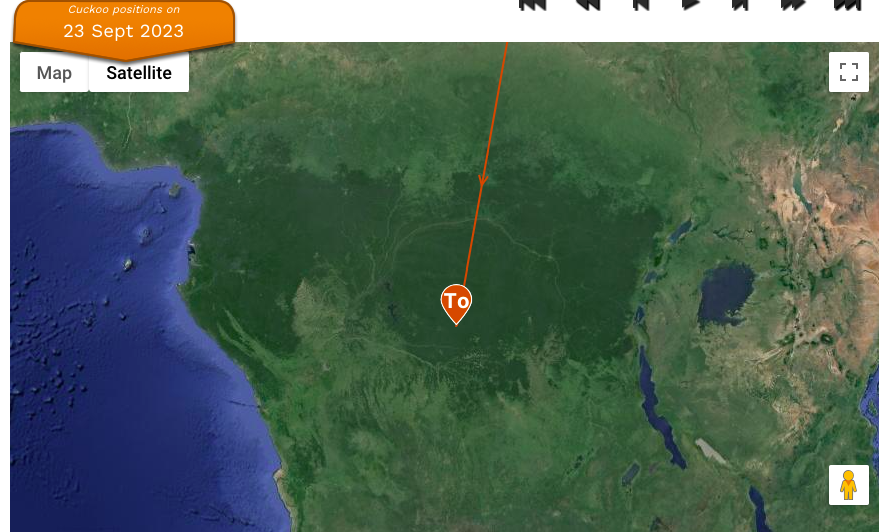
This guy is now relying on at least two national parks and UNESCO-recognized areas: Killarney National Park is within the Kerry Biosphere Reserve.

For two months, 23 September–20 November, Cuach Torc is at home in the DRC. By November 21st he’s moving again. This time he heads west and, significantly, north. He stops a bit east of Inongo in the western DRC. This is also tropical rainforest but in a region experiencing rapid forest loss. He also arrives during the approaching winter dry season. He has moved a bit north by December 6th. A month later, he’s back a bit deeper into the DRC on January 4th –– now in 2024 –– and a month later he’s now getting serious about heading back to Ireland: By February 2nd, he has left the DRC for the Republic of Congo to the west.
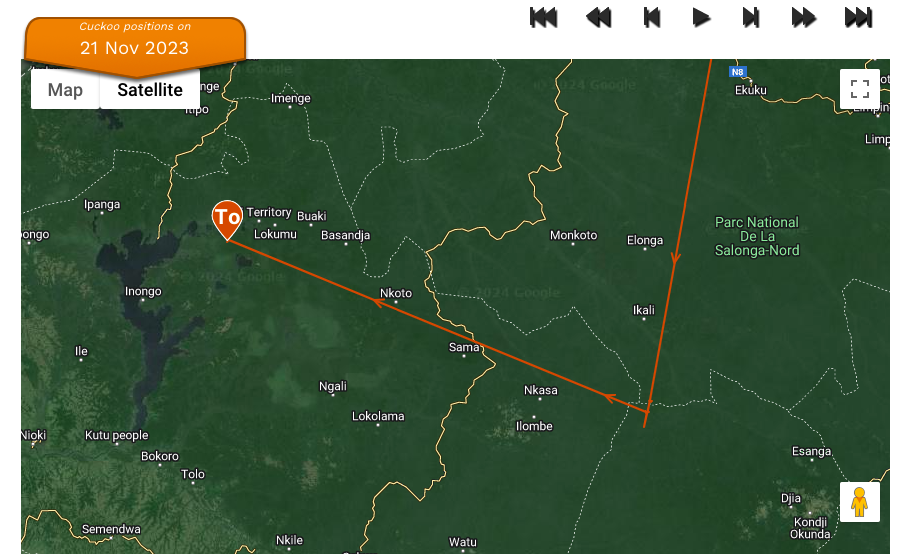



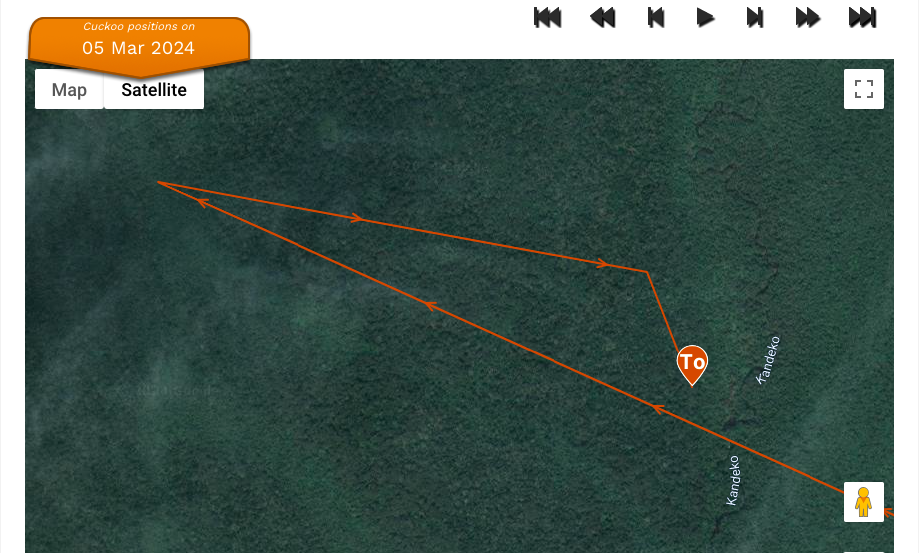

A month later, March 4th, finds him making relatively small movements in the western Congo rainforests, but then he makes his first big jump of spring migration for 2024. He spends St. Patrick’s Day on the wing and touches down in Ghana on March 18th. Again he’s at least adjacent to a significant national park. This time it’s Bui in Ghana. He’s likely hearing the snorting of hippos through the night during his stay here to at least April 4.


Now he’s a cuckoo on a mission, and it’s time to make a big jump north and back across the Sahara. By April 10th he’s in Algeria and by the 12th in Morocco. It looks like Settat will be his chosen place to fuel up for the next leg of the journey, and by the 21st of April he’s made it past Gibraltar and into central Spain. By May 1st he’s in Brittany in France; a big open water crossing over the Celtic Sea lands him back again in Killarney National Park by May 4th!
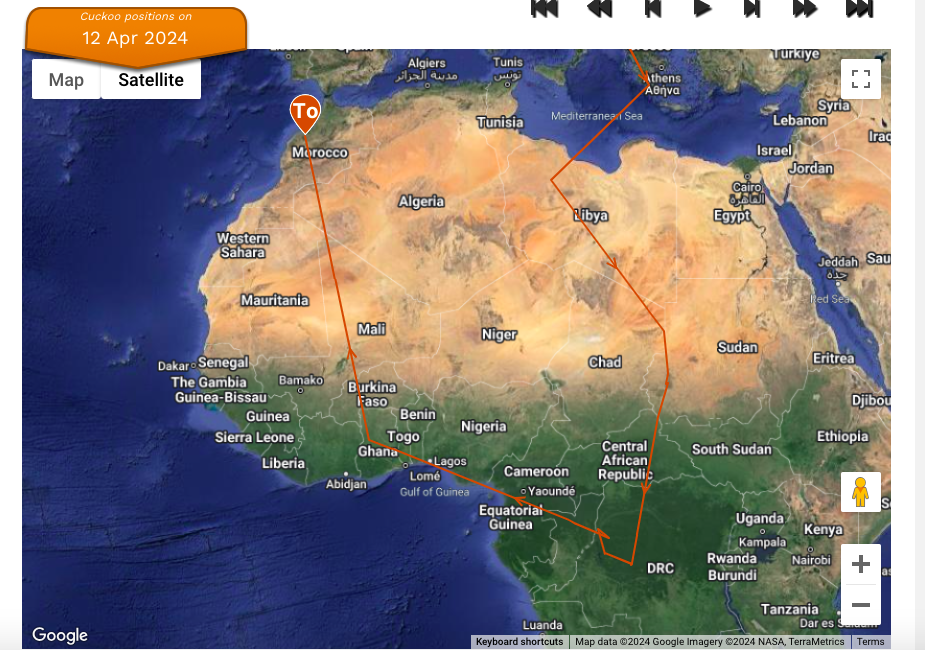
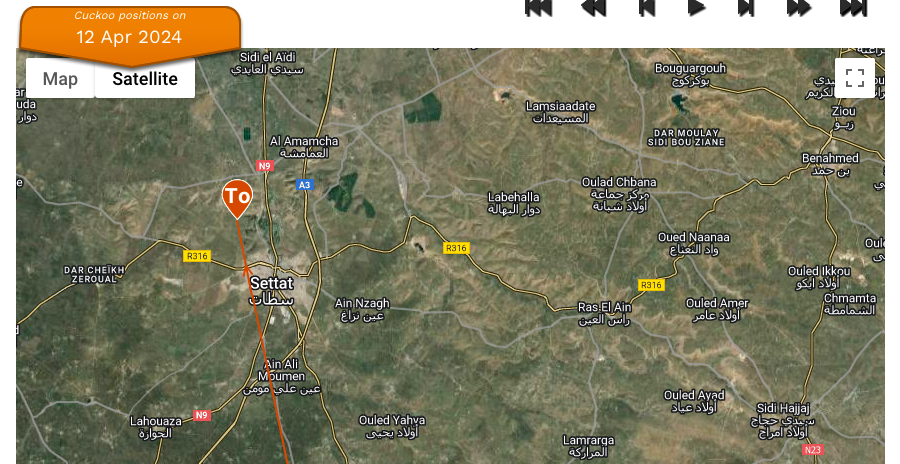

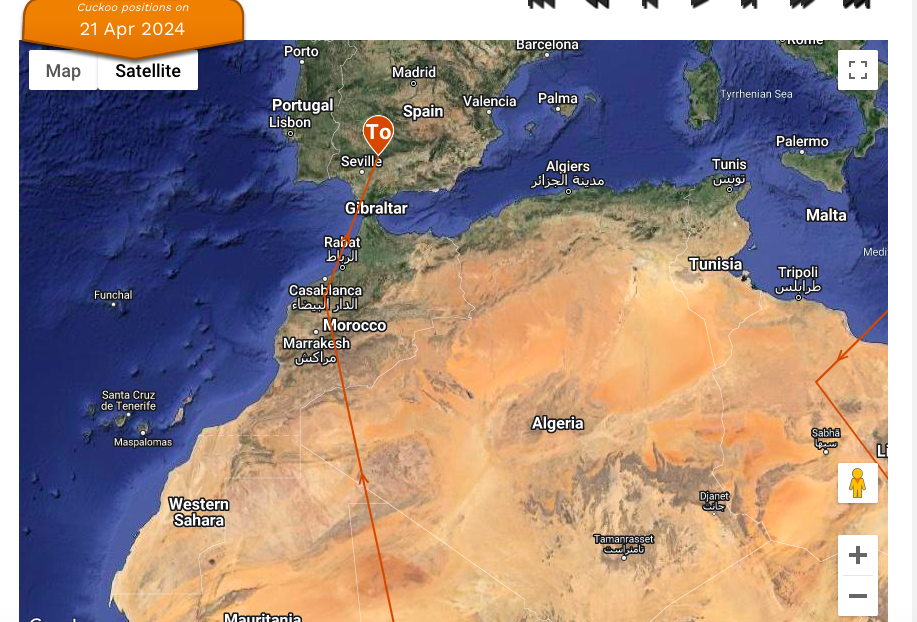
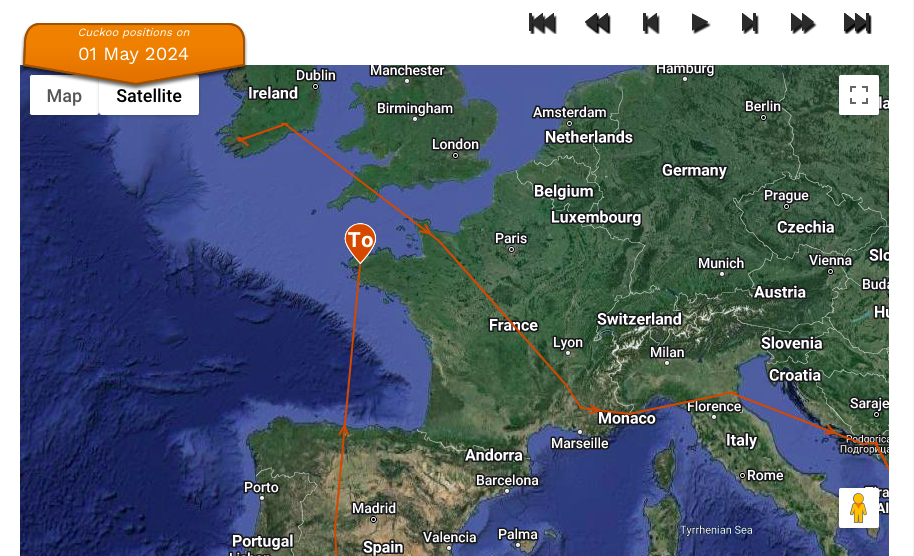

His breeding territory seems to be just east of Moll’s Gap and south of Lough Leane. The breeding season is short for a cuckoo, however, and our man the wanderer is a month later beginning his “autumn” migration: by June 3rd he’s back near the Cork/Waterford border and en route to his southbound launching point near Youghal!


Two weeks later, and he takes off on June 15th from a beachhead south of Ardmore and reaches Normandy. By the 21st of June, he’d found a nice woodlot north and west of Troyes in Champagne and that is, presumably, where he is as I’m writing on June 22nd.
See that line of trees way back there beyond the field? He’s back in there somewhere.






What can we learn from this, and why is it so fascinating to me? Well, the lessons of distance and movements and site fidelity and human conflict and the importance of protected lands and gratitude to the BTO for committing to this study and sharing their updates are, to me, all obvious. The lesson that got my attention and spurred me to take this time to summarize Cuach Torc’s peregrinations, however, might be a bit more subtle: In both 2023 and 2024, our man began his “autumn” migrations in early-mid June. He’s already heading “south for the winter” while it’s technically still spring! Migration never stops. Godspeed, Cuach Torc! May the winds indeed be at your back.


June 24, 2024 update: deciding the French cheeses weren’t hole-y enough for him, Cuach Torc has gone to Switzerland. If you happen to be hiking toward Pilatus from Alp Wolfetsmatt today, you might meet him on the trail!
LikeLike
26 June 2024 –– he’s south of Venice now.
LikeLike